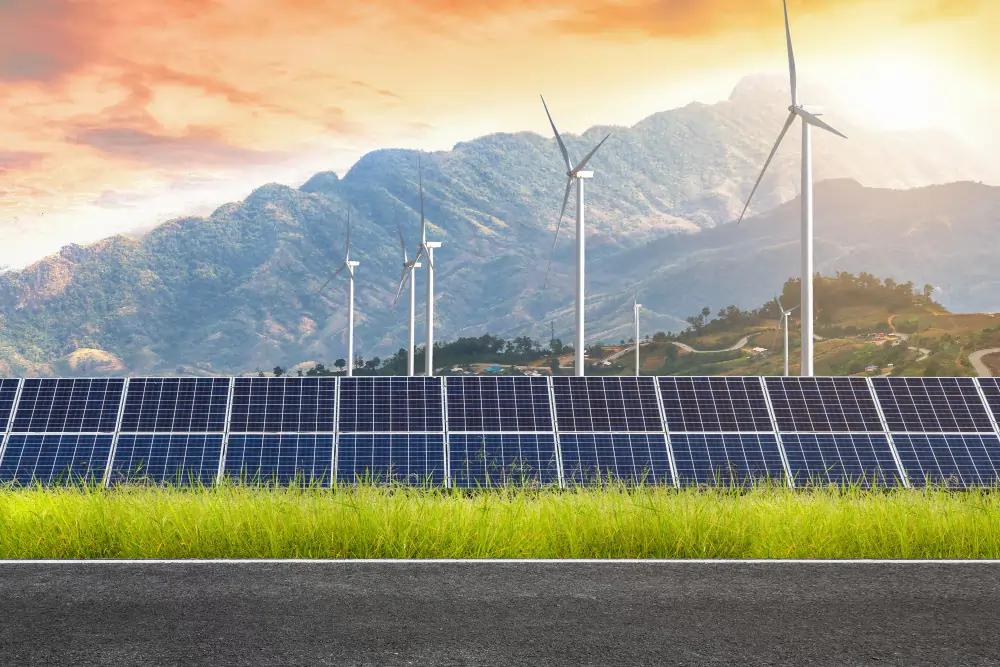The world is growing to become more urban, and so is the trend of 'smart buildings...


The size of the global smart building market is projected to grow at a CAGR of 28.5% from 2024 to 2030. It is not surprising that buildings consume 75% of the electricity and 40% of the total energy used in the US.
This explains the growing implementation of energy-saving technology in buildings in the US and elsewhere. While this is a well-known fact, some confusion remains about its true impact on energy efficiency.
Are you also confused about how smart buildings contribute to energy efficiency goals? Look no further—read this blog to the end to understand this true impact.
Sustainable smart buildings are quite different from conventional buildings in many ways. These buildings leverage a network of interconnected systems that manage everything from lighting to security and air conditioning. Using different technologically advanced tools, these buildings can:
These capabilities not only make a building smart but also enhance productivity, reduce costs, boost satisfaction levels, and drive energy efficiency. These qualities and capabilities are a must for buildings as energy efficiency becomes a more prominent priority.
Now, it must have been clear that using green building smart technology sets these buildings apart from others. But there are certain key features that you will find in these modern buildings that you must know about. These features include:
Predictive maintenance is one of the most useful features you will find in a smart building. This technology uses machine learning and data analysis to predict the failure of a system or equipment.
The system will analyze the data from different sensors to determine patterns of potential problems. This allows the managers to take prompt action and reduce the overall maintenance cost in the long run.
Almost every smart building in 2025 will come with a fault detection and diagnosis system. Here, you will need to place throughout the building to monitor the performance of every system and equipment.
In case the system detects any abnormality, it will immediately alert the management to facilitate quick action. This ensures that every system works efficiently and there is no unwanted waste of energy.
Advanced automation is one of the most important features of smart buildings in 2025. These buildings use advanced technologies to monitor and control different aspects of their operations.
This will cover everything from the building's HVAC systems to lighting and occupancy sensors. This allows these automation technologies to optimize a system's real-time performance based on the building's current requirements.
An energy monitoring system is one of the most useful features in modern smart buildings. These systems use IoT sensors to monitor the building's total energy consumption properly and accurately.
These systems monitor energy use in real-time allowing you to identify areas where there is any wastage of energy. This allows the management to take the necessary steps to address the issue and prevent any further energy wastage.
The use of renewable energy is a must today, and smart buildings are great at integrating them into the system. These buildings can integrate sources like wind turbines and solar panels into their design.
This helps the building generate its own electricity instead of relying on sources burning fuel. Needless to say, this is a very effective tool for reducing the building's carbon footprint and lowering atmospheric greenhouse emissions.

There are countless factors that make smart building energy efficiency so important in today's day and age. So, let's take a closer look at each of these reasons for a better understanding:
With rising inflation and energy prices, utility bills have become a major concern for many. This would not be the case with you if you were living in a smart building where utility expenses are quite low. You could also benefit from government incentives that come with adopting smart buildings.
The reducing effect on the environment is the primary factor fueling the popularity of smart buildings. As buildings consume less energy, their reliance on fossil fuels also reduces significantly. This translates to a smaller carbon footprint that aligns with international efforts to combat the changing climate.
As we already know, buildings consume a significant chunk of the total energy consumption in the US. This is not the case with smart buildings, where energy efficiency is a significant priority. These buildings optimize their operations to enhance energy efficiency and significantly reduce total energy consumption.
Most people don't easily realize this, but smart buildings do an excellent job of driving economic growth and prosperity. This approach helps create more jobs in development, research, and installation for better economic growth. What's more interesting is these buildings can also attract more environmentally conscious businesses and citizens for better prosperity.
Problems with the relative unpredictability of electrical grids are a major issue no matter where you live. This is where smart buildings stand out, as they can enhance the grid's stability and reliability. These systems can participate in demand response programs to make adjustments during peak hours and reduce the load on the grid.
Buildings with energy-efficient smart systems are no longer a thing of the future but very much a reality today. These buildings have advanced capabilities that help reduce energy wastage and optimize the performance of systems.
Given the unique benefits of using and integrating these systems, it only makes sense to take advantage of them. So make sure you consider the relevant perks and get the most out of your smart buildings to realize all energy efficiency goals.
The world is growing to become more urban, and so is the trend of 'smart buildings...